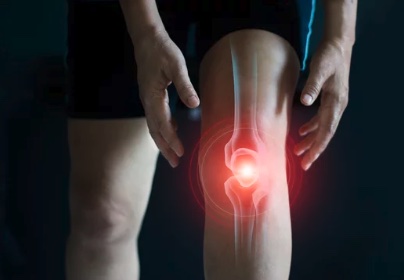
Trauma causing fracture around the knee joint can involve the top of the shin bone (proximal tibia), the bottom part of the thigh bone (distal femur) or the kneecap (patella). Fractures in the thighbone that occur just above the knee joint are called distal femur fractures and fractures to the shinbone (tibia), the long bone located in your lower leg between your knee and foot are called proximal tibia fractures.
Causes of a knee fracture
Tibial fractures are quite common and can be caused in several ways including accidents, or falls, from sports that involve repeated impact to the shinbones, such as long-distance running or soccer, or from osteoporosis which can make the bones weaker than usual.
Distal femur fractures usually occur either in older people whose bones are weak, or in people who suffer a high impact injury from a car crash or similar. In both the elderly and the young, the breaks may extend into the knee joint and may even shatter the bone into many pieces.
Symptoms of a fracture in the knee
The most common symptoms of a distal femur fracture include pain with weightbearing, swelling, bruising, tenderness, and deformity. For most patients, these symptoms occur around the knee, but you may have symptoms in the thigh area also. Distal femur fractures hurt a lot when you try to move your leg, or your knee joint and you usually can’t bear to walk on the leg at all.
The most common symptoms of a proximal tibia fracture include localised pain in one or several areas down the shinbone, lower leg swelling, bruising, and tenderness. In some cases, the only symptom of a small fracture is a pain in the shin while walking however in more severe cases, the tibia bone may protrude through the skin.
Diagnosing a knee fracture
To diagnose a knee fracture, Dr Singh will go through all your medical history, followed by a physical examination. You will be asked about the circumstances of the injury and when you first experienced the symptoms. Some fractures are clearly visible in the examination whilst others will need to be confirmed with an x-ray. Dr Singh will also check for signs of hemarthrosis (bleeding into the joint), potentially causing swelling, stiffness, or more serious complications.
Many conditions can cause knee pain, so a correct diagnosis in consultation with Dr Singh is critical in determining the best treatment option for you.
Treating knee fractures
Fracture treatment varies according to the severity of the injury. Simple fractures are usually treated with a cast or splint, which keeps the knee straight and restricts movement while the bone heals naturally. Fractures of the distal femur or proximal tibia can be broadly divided into extra-articular (not involving the knee joint) or intra-articular (fracture extending into the knee joint).
High energy fractures are often severe injuries with long lasting consequences so most of these fractures require surgical fixation with plates and screws or intra-medullary nails – to regain limb alignment and length; restore the joint surface and enable early movement, exercises, and weight bearing. Smaller bone fragments may have to be removed if they are too small to pin.
Your treatment options can all be discussed in your consultation with Dr Singh.
 Christmas Operating Hours
Christmas Operating Hours 


















